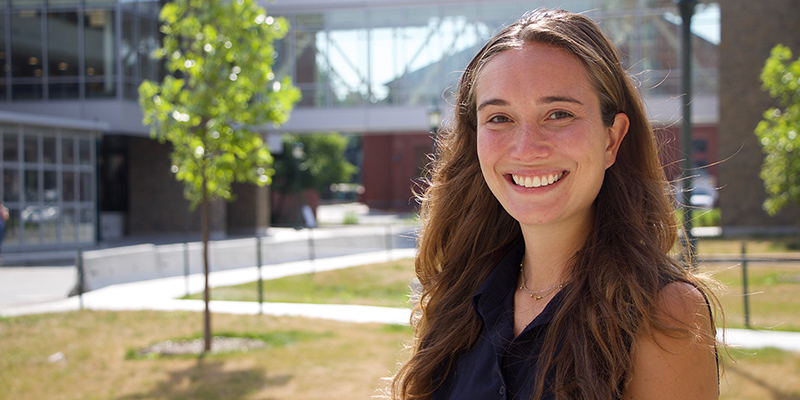By Jan K. Carney, MD, MPH, Associate Dean for Public Health, Professor of Medicine, UVM College of Medicine
Influenza (the flu) is a contagious viral disease and spreads by tiny droplets created when people infected with the flu cough or sneeze. Someone with flu can spread it to other people from as far as six feet away. People can spread the flu one day before they complain of flu symptoms and up to a week (sometimes longer in children) after becoming ill. Flu symptoms may include fever, chills, cough, sore throat, muscle aches, stuffy nose, headache or fatigue, but not everyone gets all the symptoms. Sometimes people wonder if it is a cold or the flu, and the National Institutes of Health publishes some helpful distinctions.
What’s the worry? It’s only the flu, right?
Although some people may think “It’s just the flu,” more than 200,000 people are hospitalized in the U.S. each year with flu-related complications. These may include pneumonia, sinus or ear infections, or the flu contributing to worsening health in people with chronic conditions such as certain heart conditions or asthma. Some people are at higher risk of flu complications: people over age 65 or with chronic health conditions, pregnant women, and young children. And people do die from the flu: over the past 30 years, annual flu deaths have ranged from 3,000 to 49,000.
Types of Influenza viruses
There are two major types, A and B, causing seasonal flu epidemics in humans. Influenza A viruses have different strains, such as A (H1N1) and A (H3N2) and different subtypes based on hemagglutinin (H) neuraminidase (N) proteins on their surface. Influenza B viruses have different strains (called lineages) – B/Yamagata and B/Victoria.
How do we know when the flu is here?
The Centers for Disease Control and Prevention (CDC) tracks influenza in the United States and updates a publicly available map each week. Like more detail? (Or want to become a disease detective?) Check out the CDC’s Key Flu Indicators and weekly Flu View report. Regular updates are available in Vermont through the Department of Health’s website.
Why should I get a vaccine each year to prevent the flu?
Flu viruses change, sometimes in a minor way, called “antigenic drift,” and other times through major changes called “antigenic shift.” Because flu viruses are always changing, each year vaccine components are reviewed and updated as needed. In addition, people’s immunity may decrease over time, so for both of these reasons, an annual flu vaccine is recommended. Flu vaccination works by helping the body to make antibodies against the specific vaccine components, and usually takes about two weeks. Different types of vaccines are available.
It takes about 4-6 months to make an influenza vaccine in preparation for each year’s flu season, so decisions about what to include are made the previous winter, when experts study what types of flu viruses are causing disease and how well the vaccine actually protects against the flu. How well the vaccine works depends on both the age and health of the person receiving it, as well as the “match” between the types of flu virus circulating and what’s in the vaccine.
Who should get a flu vaccine?
The short answer is everyone 6 months of age and older, with a few exceptions. People should talk with their primary care provider if they have questions.
Benefits of flu vaccine include preventing influenza, especially in those with higher risk of complications; it may prevent more severe illness and lower the risk of being hospitalized, even if you do get the flu. Many studies demonstrate these benefits among people of all ages, older adults, people with chronic illness, and pregnant women and their infants.
Can I get the flu from the flu shot? No. Injectable flu vaccines are made from an “inactivated” virus or without virus (called recombinant vaccine). The flu nasal spray is made from a weakened virus, and cannot cause the flu.
Isn’t it too late to get a flu shot this year?
No. CDC reports low levels of flu across the United States, increasing in some locations, and it is still not too late to get a flu shot. Most illness occurs between December and February, but can start as early as October and last until May. Flu peaks are often seen sometime in December, so getting a flu shot now, if you haven’t already, is a good idea.
I also hear this year’s flu vaccine isn’t a great match, so should I bother?
Yes, get a flu shot if you haven’t already. The CDC reported on December 3 that about half of the influenza A (H3N2) viruses from October to November of this year were a good match to the vaccine, while about half were not, as a result of virus “drifting.” The H3N2 strains have also been associated with more severe flu seasons in previous years and more hospitalizations. So in addition to the glass half-full vs. half-empty perspective, the current vaccine may still provide some level of protection, even when not a perfect match, reducing more serious complications and deaths. This year’s vaccine also protects against other flu strains – H1N1 flu and B strains. See Vaccine Match for a detailed description of these benefits.

The flu is familiar, but familiar doesn’t mean harmless, even in healthy people. CDC reminds us that “The most important thing is for all people 6 months and older to get a flu vaccine every year.”
National Influenza Vaccination Week is December 7-13, 2014. Need to find a flu vaccine? Check with your primary care office or see the Flu Vaccine Finder at www.flu.gov. Put in your zip code and you will see a list of nearby locations offering flu vaccine.

Jan Carney, M.D., M.P.H., is associate dean for public health at the University of Vermont. She is director of the UVM Master of Public Health Program.





